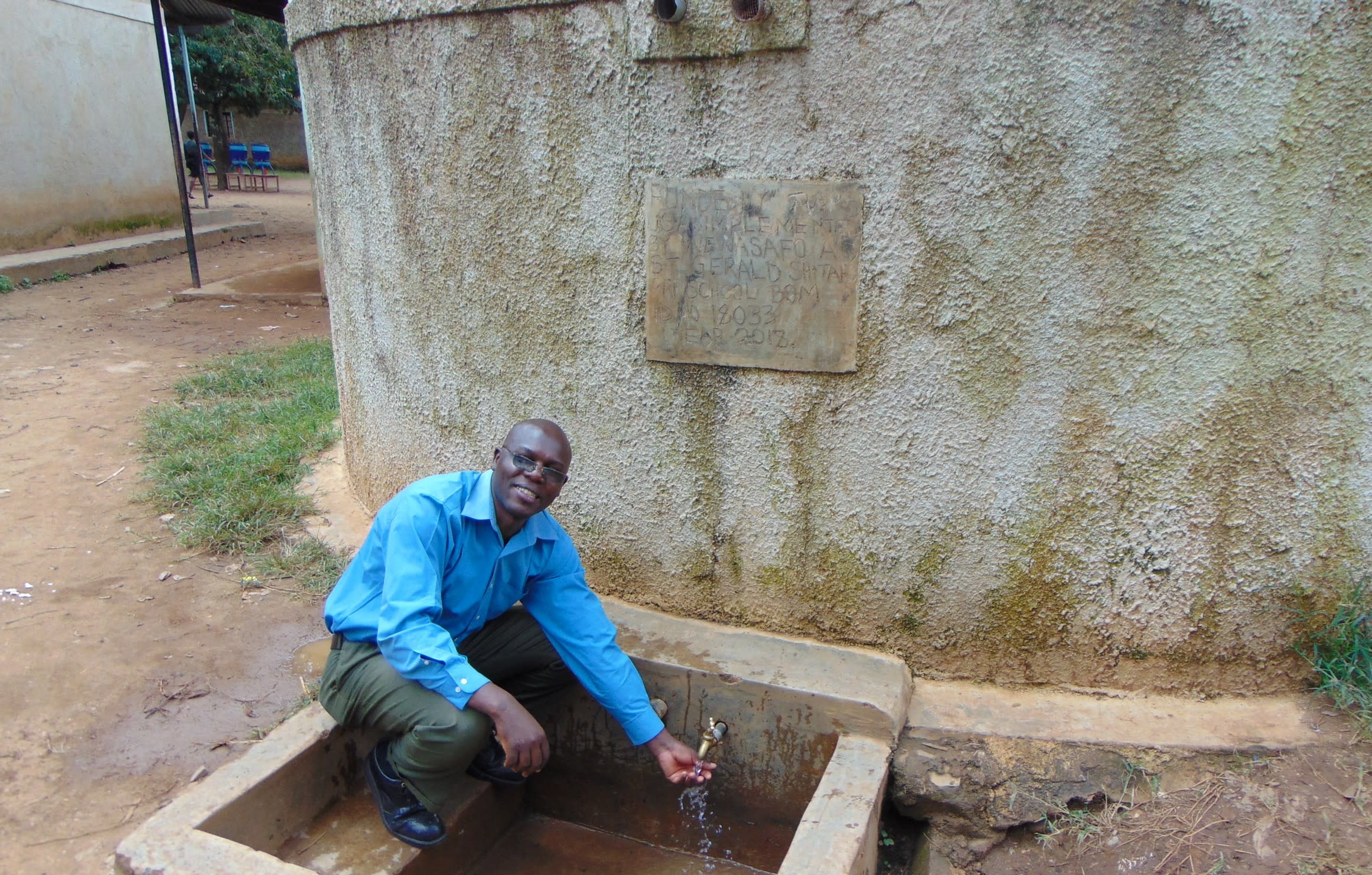St. Gerald Shitaho Primary School is located in Kakamega County, Kenya. There are 711 students enrolled here, who are taught by 18 teachers. The school also employs three support staff.
There's activity at Shitaho Primary School as early as 6:30am when pupils start arriving, most with small plastic containers in hand. Once that container of water is dropped off at the kitchen, students start picking up litter around the compound while others clean the latrines. They all settle in for 8am lessons.
Most of the students' parents tend their farms and take casual labor jobs to feed their families.
Water
This school does not have a water source, and that's why students are required to come to school with water every morning. Students often fill their containers on the way to school. While parents and teachers would prefer them to get clean water from Mwikholo Spring, there are many dirty water sources along the way that they use. In fact, one of the closest water sources to Shitaho Primary School is an unprotected spring.
School administration is afraid that even when students get clean water from Mwikholo Spring, it gets contaminated by the time they finish the long dusty trek to school. Containers are dirty and uncovered, and students need to learn how to safely handle their drinking water.
The water brought to school is used for drinking, cooking lunch, and cleaning. When there isn't enough water to get through the day, older students are sent back out in search of water.
Students are absent from class a lot, and they say this is most often because of stomachaches and diarrhea - symptoms related to drinking unsafe water. There are also regular reports of waterborne illnesses like typhoid and cholera.
Sanitation
Students are currently sharing their latrines with the polytechnic school that just opened. There are too few latrines for the users. They are in poor condition, with large holes in the doors that don't allow the students any privacy.
There are no handwashing stations, and both students and staff are ashamed of the facilities they endure.
"My school is one of the schools bordering the big town, but it still has poor sanitation facilities, especially the toilets. I feel so ashamed, especially when I am given an opportunity to hold an event in the school but the toilets are not enough for visitors," headteacher Maurice Ingonga said.
What we can do:
Training
There will be two days for teachers, students, and parents to meet at the school to learn about hygiene and sanitation practices. They will also attend sessions on the management and maintenance of their new rainwater catchment tank, latrines, and handwashing stations. We will use all of our training topics to empower participants to invest their time in positive behaviors that promote health, prolong life, and enable them to become more self-reliant citizens.
The facilitator will use PHAST (participatory hygiene and sanitation transformation), ABCD (asset-based community development), CTC (child to child), lectures, group discussions, and handouts to teach health topics and ways to promote good practices within the school. The CTC method will prepare students to lead other students into healthy habits, as well as kickstart a CTC club for the school.
Handwashing Stations
The two handwashing stations are 50-liter plastic barrels on metal stands, and each has a tap to conserve water. These are often delivered by hygiene and sanitation training so they can be used for demonstrations but always arrive by a project’s completion.
The CTC club will be in charge of filling these stations with water and will ensure that there is always a cleaning agent like soap or ash.
VIP Latrines
Two triple-door latrines will be constructed with local materials that the school will help gather. Three doors will be set aside for each gender. And with a new source of water on school grounds, students and staff should have enough to keep these new latrines clean.
Rainwater Catchment Tank
A 50,000-liter rainwater catchment tank will help alleviate the water crisis at this school. The school will also help gather the needed materials such as sand, rocks, and water from the spring for mixing cement. Once finished, this tank can begin catching rainfall that will be used by the school’s students and staff. Students will no longer waste valuable energy and time finding water on the way to school and throughout the day.
We and the school strongly believe that with this assistance, standards will significantly improve. These higher standards will translate to better academic performance for these little scholars!

 Rainwater Catchment
Rainwater Catchment
 Rehabilitation Project
Rehabilitation Project







































